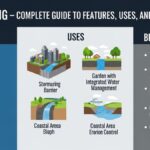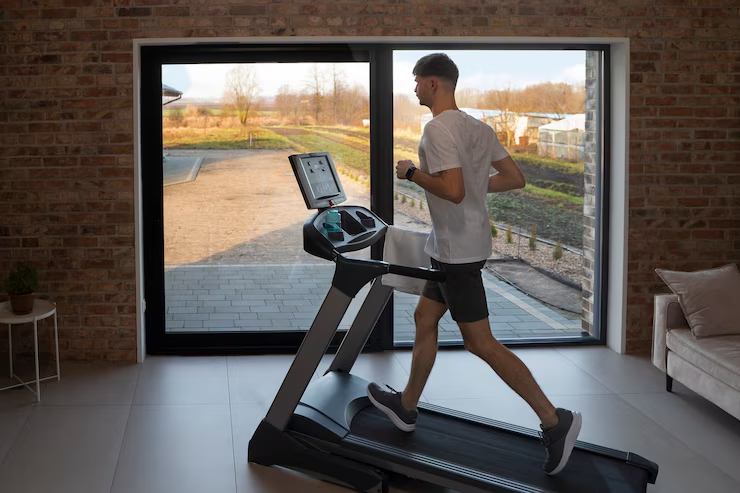We live in a world that often equates exercise with pounding the pavement or lifting heavy weights in a traditional gym setting. While these methods are undoubtedly effective, they aren’t the only paths to fitness and well-being. Exploring alternative ways to exercise can not only keep things interesting and prevent burnout but also cater to different physical needs and preferences. Similarly, recovery is often viewed as simply resting, but innovative techniques can significantly enhance the body’s ability to repair and adapt. Let’s delve into some exciting alternatives for both exercise and recovery, including the intriguing world of vibration plates and the therapeutic benefits of deep tissue massage.
https://www.pexels.com/uk-ua/photo/275768/
Shaking Things Up: The Vibration Plate
The vibration plate, also known as a power plate or vibrating platform, offers a unique approach to exercise. Instead of relying solely on your own muscle power to create movement, you perform exercises – or even simply stand – on a platform that vibrates at a high frequency. This rapid vibration transmits energy throughout your body, causing your muscles to contract and relax dozens of times per second.
Benefits of Vibration Plate Exercise:
- Increased Muscle Activation: The vibrations force your muscles to work harder to stabilize your body, potentially engaging more muscle fibers compared to traditional exercises.
- Improved Strength and Power: Studies suggest that incorporating vibration plate training can lead to gains in muscle strength and power.
- Enhanced Flexibility and Balance: The instability created by the vibrations can challenge your balance and improve flexibility over time.
- Improved Circulation: The rapid muscle contractions can help to increase blood flow throughout the body.
- Reduced Muscle Soreness: Some research indicates that vibration plate use may help to reduce muscle soreness after intense exercise.
- Potential for Bone Density Improvement: The mechanical loading on the bones from the vibrations may contribute to increased bone density.
Incorporating Vibration Plates:
Vibration plates can be used in various ways:
- As a warm-up: Gentle vibrations can help to activate muscles and prepare them for more intense activity.
- During strength training: Performing squats, lunges, push-ups, or planks on a vibration plate can increase the challenge.
- For balance training: Simple standing or performing balance exercises on the vibrating platform can improve stability.
- As a cool-down: Lower frequency vibrations may aid in muscle recovery.
While vibration plates offer promising benefits, they are not a replacement for traditional exercise. A well-rounded fitness routine should still include cardiovascular activities and other forms of strength training. It’s also advisable to consult with a healthcare professional before using a vibration plate, especially if you have any underlying health conditions.
Deep Relief: The Power of Deep Tissue Massage
Recovery is just as crucial as the workout itself. It allows your body to repair muscle tissue, reduce inflammation, and adapt to exercise stresses. While rest and proper nutrition are fundamental, deep tissue massage offers a powerful alternative for enhancing recovery and overall well-being.
Unlike a gentler relaxation massage, deep tissue massage targets the deeper layers of muscle and connective tissue (fascia). Therapists use slow, deliberate strokes and firm pressure to release chronic muscle tension, knots, and adhesions that can build up from intense exercise, poor posture, or injury.
Benefits of Deep Tissue Massage for Exercise Recovery:
- Reduced Muscle Soreness: By increasing blood flow and lymphatic drainage, deep tissue massage can help to flush out metabolic waste products that contribute to post-exercise muscle soreness (DOMS).
- Improved Circulation: The pressure applied during the massage helps to improve blood flow, delivering more oxygen and nutrients to the muscles, which aids in repair.
- Increased Flexibility and Range of Motion: By releasing tight muscles and breaking down adhesions, deep tissue massage can improve joint mobility and flexibility.
- Reduced Muscle Tension and Spasms: Deep pressure can help to relax contracted muscles and alleviate painful spasms.
- Breakdown of Scar Tissue: For those recovering from injuries, deep tissue massage can help to break down scar tissue, improving movement and reducing pain.
- Stress Reduction: While targeting deep tissues, this type of massage can also promote relaxation and reduce stress hormones, contributing to overall recovery.
Incorporating Deep Tissue Massage:
The frequency of deep tissue massage will depend on your training intensity, individual needs, and budget. Many athletes and active individuals find that incorporating a deep tissue massage session once or twice a month can significantly aid their recovery. It’s essential to communicate openly with your massage therapist about your activity levels and any specific areas of tension or pain.
The Synergy of Alternatives
Vibration plate exercise and deep tissue massage, while distinct, can complement each other effectively. Using a vibration plate for a warm-up can prepare the muscles for a deeper massage. Conversely, a deep tissue massage can address muscle imbalances and tightness that might hinder the effectiveness of vibration plate exercises.
Conclusion
Stepping outside the traditional gym routine and exploring alternative exercise methods like vibration plate training can add variety, challenge your body in new ways, and potentially offer unique benefits. Similarly, embracing recovery techniques beyond simple rest, such as deep tissue massage, can significantly enhance your body’s ability to repair and adapt. By understanding and incorporating these alternatives, you can create a more holistic and effective approach to fitness and well-being, ensuring a healthier and more enjoyable journey towards your goals. Remember to listen to your body and consult with professionals to determine what works best for you.











